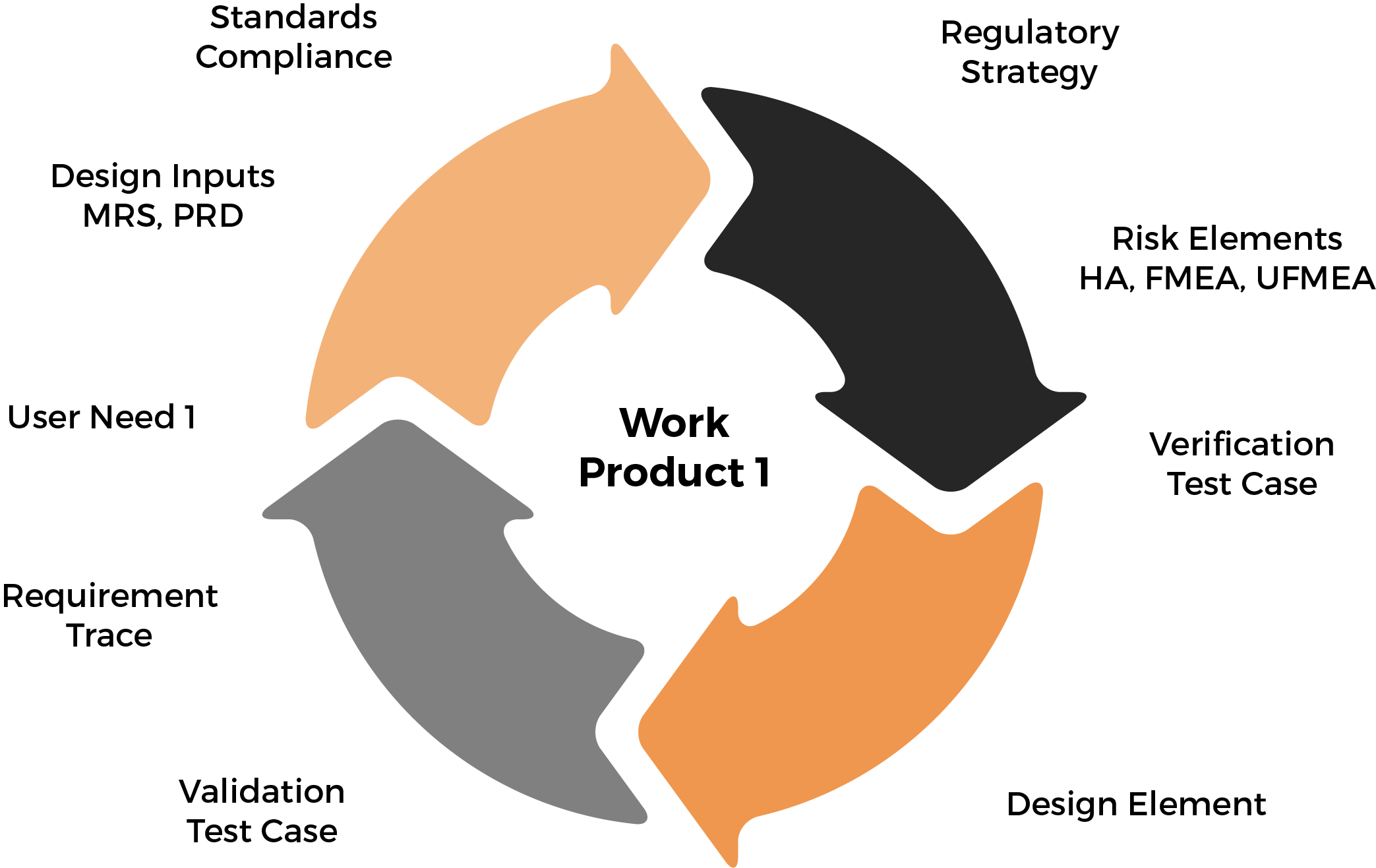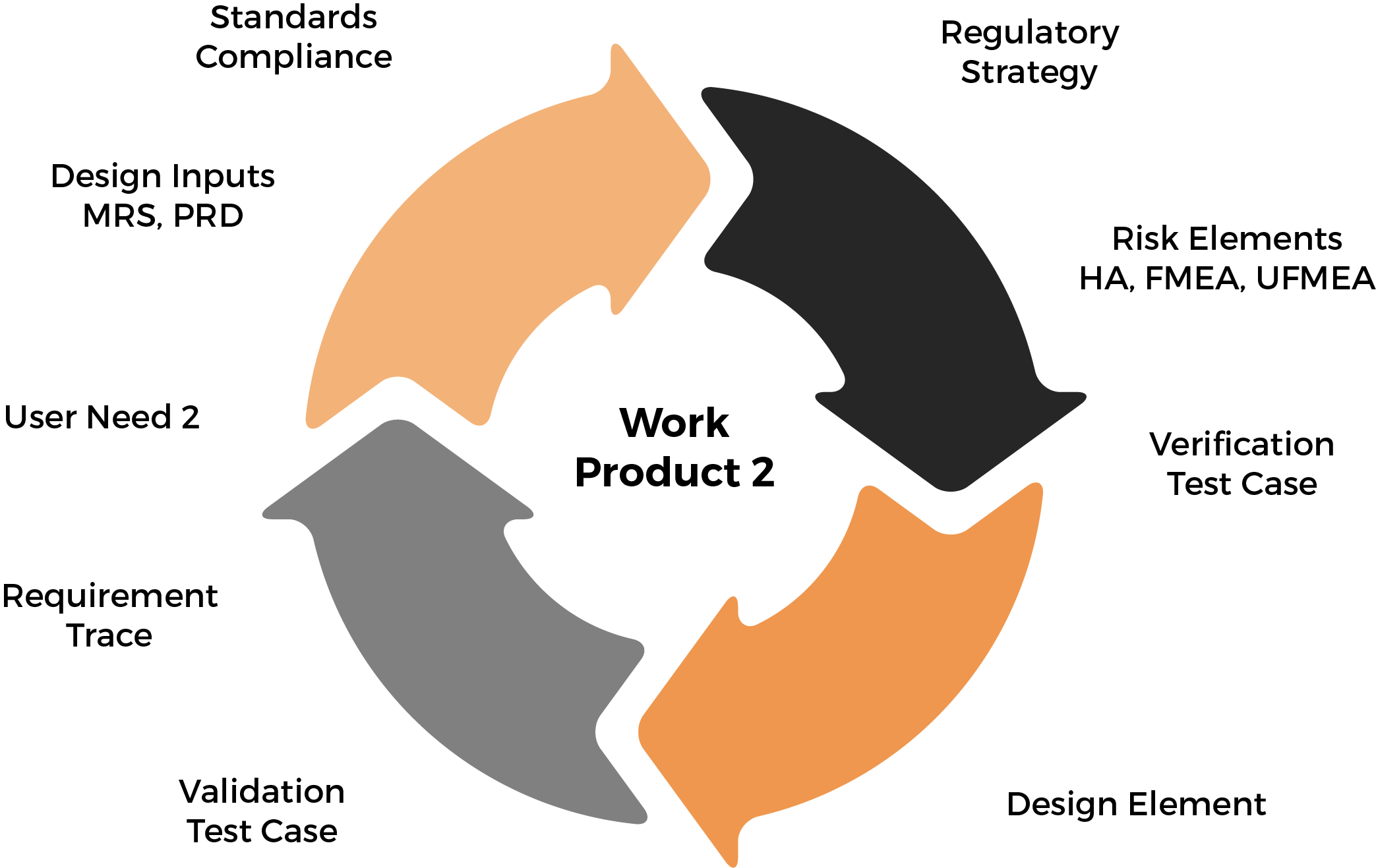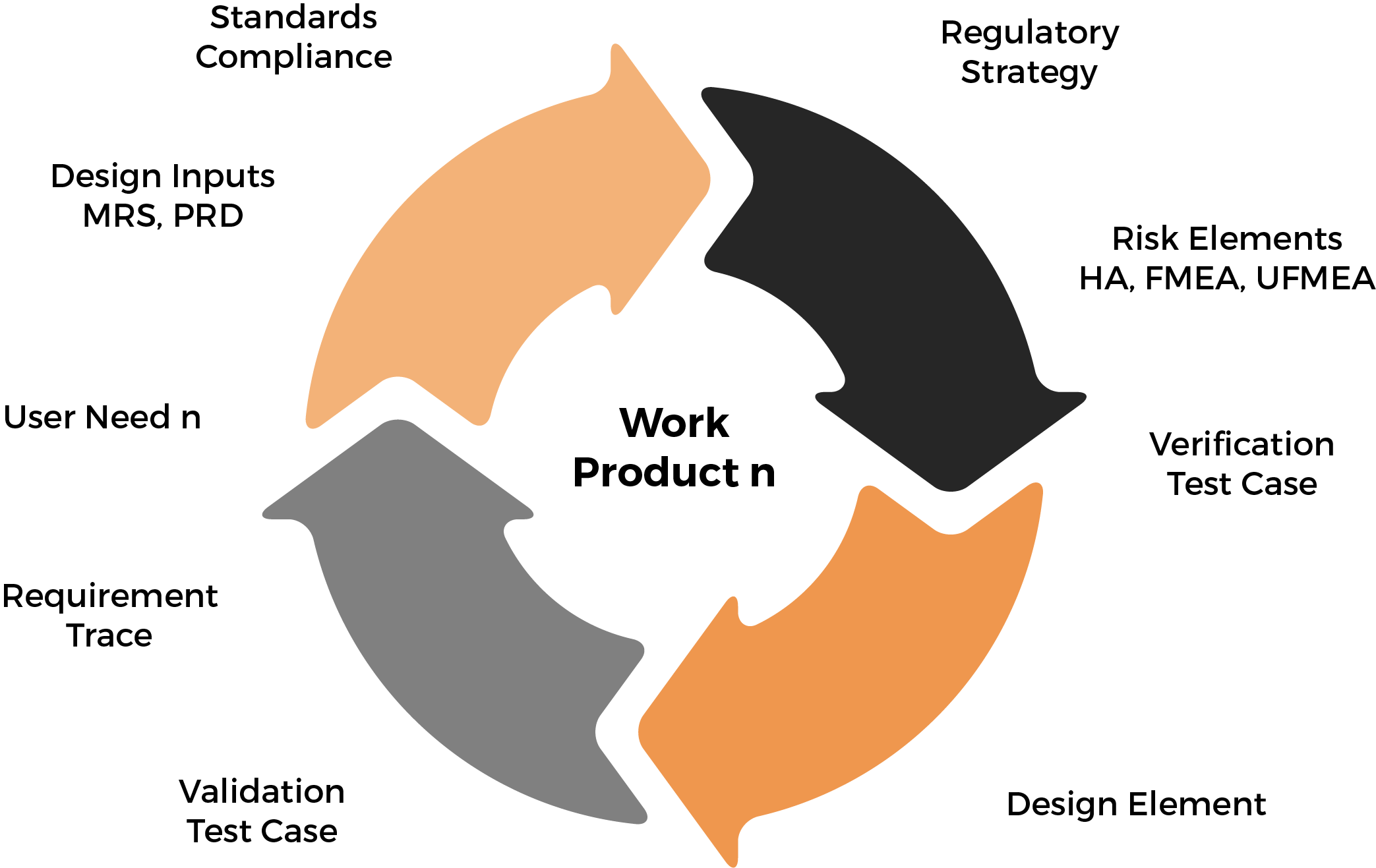The Agile Design Process
A New system of development
Most medical device manufacturers utilize a classic waterfall development process. This is a risk–averse, top-down approach that does not keep pace with demands of today’s marketplace.

Most medical device manufacturers utilize a classic waterfall development process. This is a risk–averse, top-down approach that does not keep pace with demands of today’s marketplace.

AMDD’s Agile System is Different
At AMDD, we are the first to develop a set of design and development processes that leverage modern rapid prototype techniques in circuit design and 3D printing, as well as modern requirement management tools to iterate elements of a medical device piecewise This process develops all supporting documentation, requirements, risk elements, traces, test cases, etc., that create a single medical device work product.
These iterations of products and product features are tested, verified, and validated, allowing for tweaks, requirement changes, risk updates, and compliance updates as needed.








Principles behind the Agile MDD Manifesto
We Follow These Core Principles
Early and continuous delivery of work product
Our highest priority is client satisfaction in delivery.
We Wellcome changing requirements, even late in development
Agile processes harness change for a competitive advantage.
Deliver prototypes frequently
We can deliver every couple of weeks to a couple of months, with a preference to the shorter timescale.
Collaboration Across Working Roles
Business people and developers must work together daily throughout the project.
Build projects around motivated individuals
We give them the environment and support they need, and trust them to get the job done.
Face to Face Conversation

Agile processes promote sustainable development
The sponsors, designers, developers, and users should be able to maintain a constant pace indefinitely.
Technical Excellence & Good Design
Continuous attention to these core priorities enhances project development agility.
Simplicity is essential
The art of maximizing the amount of work NOT done optimizes the process throughout.
Self-Organizing Teams
Regular reflection and re-tuning
At regular intervals, the team reflects on how to become more effective, then tunes and adjusts its behavior accordingly.